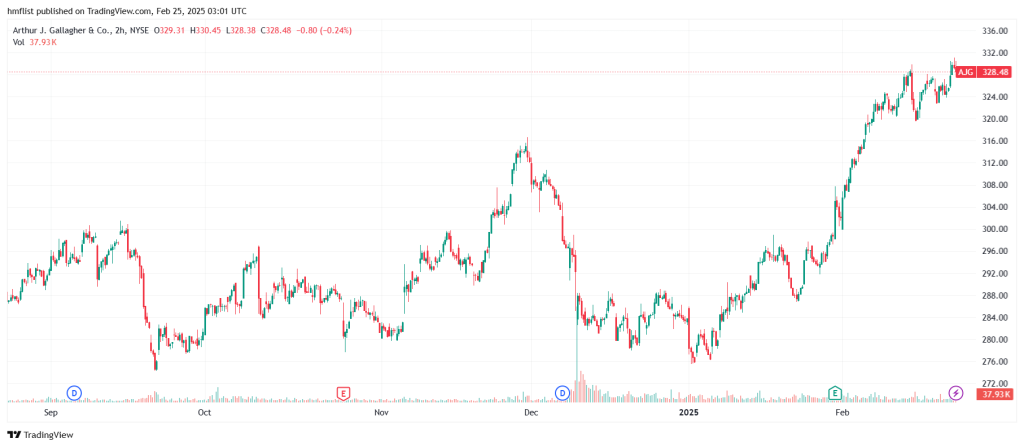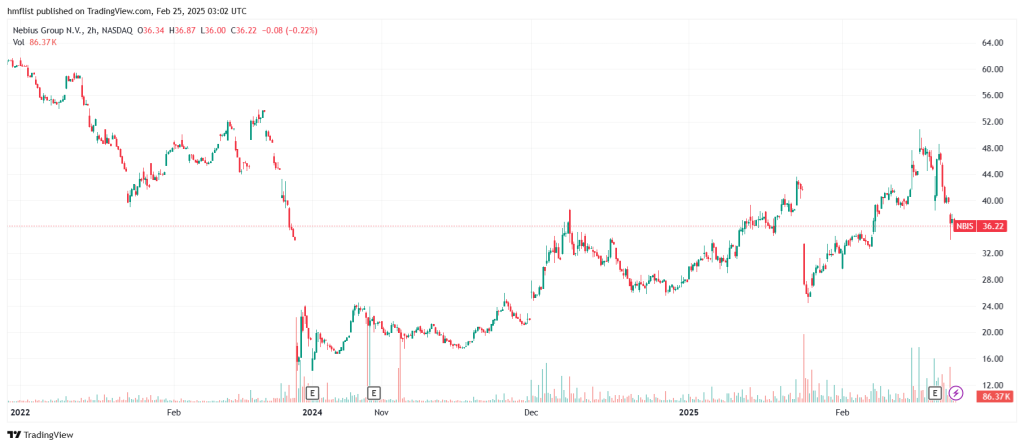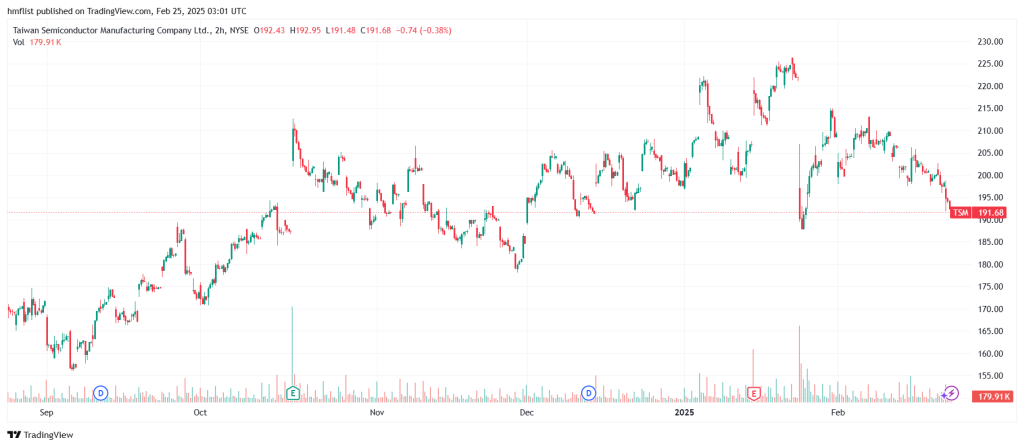Three Resilient Stocks Trading at Deep Discounts
The market’s recent pullback has created compelling opportunities for investors willing to look past the short-term noise. The tech-heavy Nasdaq’s 10% correction and the S&P 500’s 6.5% decline from its high have left quality companies trading at significant discounts to their intrinsic value.
While uncertainty around Trump’s tariff policies continues to unsettle markets, this volatility has created a silver lining: fundamentally sound businesses with tariff-resistant models are now available at attractive valuations. These opportunities don’t tend to last long in today’s market environment.
Let’s examine three standout candidates that deserve a spot on your buy-the-dip watchlist.
On Holding (ONON)
On Holding, the Swiss athletic footwear company, has managed to maintain strong momentum across all its key markets despite broader economic concerns. What makes ONON particularly appealing in the current environment is its minimal sourcing exposure to regions impacted by potential tariff changes.
The company’s recent fourth-quarter results exceeded expectations, demonstrating its ability to execute even during challenging market conditions. The stock has surged 42% over the past 12 months, but there’s likely more room to run.
What separates On from competitors is its relentless focus on innovation. The company has successfully positioned itself as a premium performance brand, allowing it to maintain pricing power while expanding its product lineup. This strategy has translated into industry-leading sales growth that looks sustainable for the foreseeable future.
The market correction has created an entry point for investors who may have previously felt they missed the boat. With the stock currently trading around $48, there’s significant upside potential based on the company’s growth trajectory.
Oshkosh Corporation (OSK)
Military vehicle manufacturer Oshkosh presents a compelling opportunity for investors seeking a tariff-resistant business model with strong domestic production capabilities. Despite its solid fundamentals, shares have slumped 18% over the last 12 months, creating an attractive entry point.
What makes OSK particularly resilient to current trade tensions is its business composition: approximately 84% of the company’s revenue comes from the United States, with much of its production happening domestically. This insulates Oshkosh from the direct impact of tariff policies that have rattled other industrials.
Additionally, the company’s global manufacturing footprint gives it operational flexibility, allowing management to shift production as needed to mitigate potential cost increases. Even in scenarios where some tariff impact is unavoidable, Oshkosh has demonstrated its pricing power and ability to pass costs through to customers when necessary.
At current levels around $97, the stock trades significantly below its intrinsic value, offering an appealing risk-reward profile for investors willing to look beyond short-term market anxieties.
Citigroup (C)
While banking stocks have generally benefited from the November election results, Citigroup has lagged the sector, declining 1.8% year-to-date. This underperformance has created an opportunity in a bank that’s uniquely positioned to benefit from the current macroeconomic environment.
Citigroup’s global reach as an intermediary across regions gives it a competitive advantage during periods of trade policy shifts. The bank successfully navigated the first round of tariffs during Trump’s previous administration, leveraging its international presence to capture value from cross-border transactions even as trade policies evolved.
What makes Citigroup particularly compelling right now is its valuation. The stock is currently trading at approximately three-quarters of its tangible book value, providing both a margin of safety and significant upside potential as the company executes its strategic transformation.
This discounted valuation has another benefit: the company’s share repurchase program can acquire more shares with the same capital allocation, creating additional value for long-term shareholders. As uncertainty subsides and the market recognizes Citigroup’s improving fundamentals, patient investors stand to be rewarded.
Bottom Line
Market corrections like the one we’re experiencing typically create opportunities for investors with longer time horizons. These three companies share a common thread: strong fundamentals, business models that can withstand trade policy shifts, and attractive valuations relative to their growth prospects.
While additional volatility may be ahead as tariff policies take shape, positioning your portfolio with quality companies trading at discounts to their intrinsic value remains a time-tested approach to long-term wealth creation. The key is identifying businesses with defensible competitive positions and the operational flexibility to adapt to changing economic conditions—precisely what On Holding, Oshkosh, and Citigroup offer at current levels.















